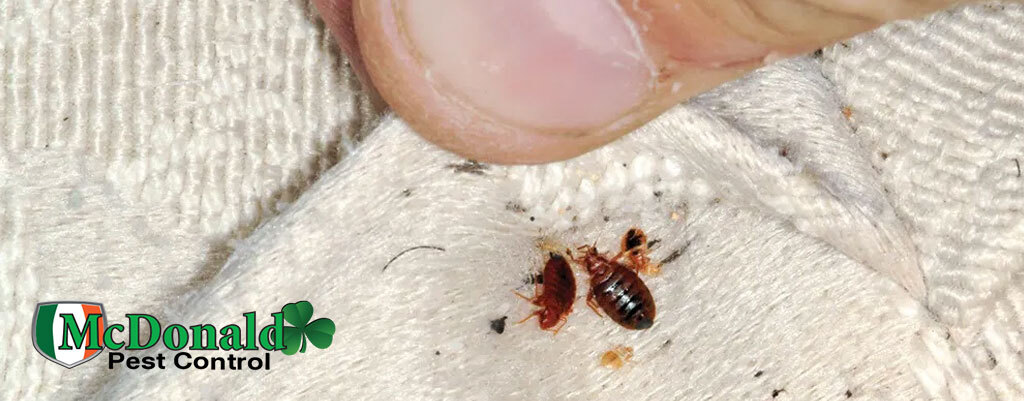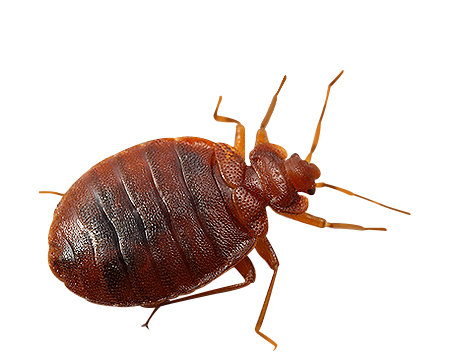Affordable Bed Bug Heat Treatment for Quick and Effective Results
Affordable Bed Bug Heat Treatment for Quick and Effective Results
Blog Article
Get Informed Regarding the Types of Insect Control Methods and Their Advantages for Home Owners
Recognizing the numerous insect control approaches offered to homeowners is necessary for efficient parasite administration. House owners who are educated can make critical selections that not only address parasite problems but additionally improve the overall quality of their living atmosphere.
Chemical Pest Control Techniques
Chemical insect control methods are a critical part of integrated parasite management techniques for house owners seeking reliable services to pest problems. These methods involve the application of chemical substances made to remove or deter insects that endanger individual building, health and wellness, and comfort. Common chemicals utilized include insecticides, fungicides, rodenticides, and herbicides, each customized to target particular bugs.
The main advantage of chemical pest control is its rapid efficiency; several formulations provide instant results, minimizing pest populations substantially in a brief time. In addition, advancements in chemical formulations have actually resulted in products that are a lot more ecologically friendly and have reduced poisoning levels for non-target microorganisms when applied correctly.

Biological Pest Control Techniques
Natural insect control methods have actually gained prestige as homeowners look for safer and extra sustainable options to typical chemical approaches. Organic insect control strategies make use of all-natural killers, parasites, or virus to handle bug populaces efficiently. This method is not only eco pleasant but likewise decreases the danger of injury to non-target species, consisting of valuable insects and wildlife.
Among one of the most common organic control approaches entails presenting all-natural predators into the setting. As an example, ladybugs can be utilized to regulate aphid populaces, while nematodes target soil-dwelling bugs like grubs. In addition, parasitoids-- organisms that survive or within a host-- can be utilized to regulate particular insect species by laying eggs inside them, eventually leading to their demise.
An additional method is using biopesticides, which are obtained from natural materials such as germs, plants, or minerals (bed bug exterminator). These items can properly target parasites while positioning minimal danger to pets and human beings. Generally, organic pest control strategies offer house owners with a reliable methods of parasite monitoring that lines up with eco-friendly concepts, advertising a much healthier living setting while lowering dependence on synthetic chemicals
Mechanical Bug Control Strategies
Mechanical parasite control strategies encompass a selection of approaches that physically prevent or remove parasites without the use of chemicals. These methods are especially valuable for house owners seeking eco-friendly choices while making sure the security of their space.
One typical approach is using barriers, such as screens, catches, and internet, which protect against parasites from entering homes or certain locations. Mounting home window screens can efficiently keep bugs out, while using physical obstacles around yards can hinder bigger bugs like rabbits or deer. Additionally, mechanical traps made for rats can capture and eliminate these parasites without the demand for harmful materials.
Another effective technique entails using mops and vacuums to get rid of pests straight from surfaces. Routine cleaning and upkeep can bed bugs control dramatically minimize pest populaces by getting rid of food sources and concealing places. Furthermore, employing devices like ultrasonic insect repellents can deter numerous parasites with acoustic wave that are unpleasant to them however inaudible to people.
Social Bug Control Practices
Cultural insect control methods concentrate on modifying the environment and monitoring strategies to produce problems that are much less helpful to pest problems. These methods are fundamental in keeping a balanced environment and reducing the reliance on chemical interventions. By modifying agricultural practices, property owners can properly discourage parasites while advertising plant health.
One common strategy consists of crop turning, which interrupts the life process of insects by altering the sorts of plants expanded in a details area (bed bug exterminator). This not just minimizes pest populations yet additionally enhances dirt health. In addition, intercropping-- growing varied crops in closeness-- can perplex insects and reduce their capability to find their preferred host plants
Water administration is one more important facet of cultural practices. Correct watering strategies can stop standing water, which acts as a breeding place for insects and other insects. Additionally, keeping cleanliness around the home, such as consistently removing particles and food waste, can substantially lower pest tourist attraction.
Including these cultural techniques into a detailed pest management approach permits homeowners to produce a setting that naturally deters parasites, consequently boosting the performance of various other control approaches while advertising sustainable gardening and landscape design.

Integrated Pest Management Approaches
Integrated Insect Management (IPM) represents an alternative method that combines different methods to effectively take care of parasite populaces while minimizing environmental impact. This technique incorporates biological, cultural, physical, and chemical methods to achieve lasting bug control. By evaluating pest populations and their all-natural adversaries, IPM stresses tracking and recognizing bugs before applying control measures.
Among the core concepts of IPM is making use of thresholds, which establish the degree of insect task that warrants treatment. This makes sure that therapies are applied only when required, minimizing the dependence on chemical pesticides. Biological control methods, such as introducing natural predators or bloodsuckers, operate in conjunction with social methods like crop turning and habitat manipulation to interrupt pest life process.
Additionally, IPM encourages the usage of least-toxic chemical options when intervention rodents is essential, focusing on items that pose minimal danger to non-target microorganisms and the atmosphere. For home owners, embracing IPM comes close to not just boosts the effectiveness of bug monitoring but also advertises a healthier living rodent exterminator atmosphere, promoting biodiversity and lowering chemical exposure. Eventually, IPM encourages house owners to make educated decisions that stabilize bug control with eco-friendly duty.
Final Thought
Finally, understanding the various pest control techniques empowers property owners to make informed decisions pertaining to pest management. Each technique-- chemical, biological, mechanical, cultural, and integrated bug monitoring-- uses unique advantages that deal with different needs and choices. By selecting appropriate strategies, home owners can successfully take care of parasite populations while lessening wellness dangers and ecological influences. This educated technique adds to a healthier living setting, advertising total health for families and family pets alike.
Recognizing the different bug control techniques offered to property owners is essential for effective pest monitoring.Chemical bug control methods are a vital part of integrated pest management approaches for house owners seeking reliable solutions to pest problems. On the whole, biological parasite control methods provide homeowners with an effective ways of insect monitoring that lines up with ecological concepts, promoting a healthier living setting while reducing reliance on synthetic chemicals.
Cultural insect control techniques concentrate on changing the atmosphere and monitoring techniques to produce conditions that are much less conducive to pest problems.In verdict, understanding the numerous insect control techniques empowers homeowners to make educated choices relating to pest administration.
Report this page